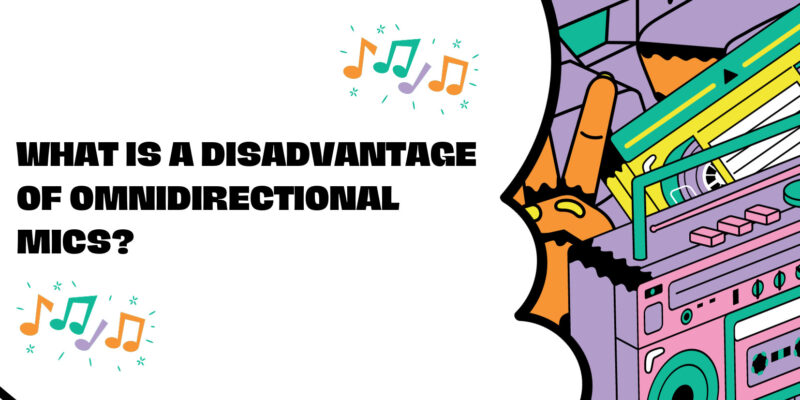Omnidirectional microphones are celebrated for their ability to capture sound uniformly from all directions, providing a natural and uncolored representation of audio sources. However, like any tool, they have their limitations and disadvantages. In this article, we’ll explore one of the main disadvantages of omnidirectional microphones and why it’s essential to consider this aspect when choosing a microphone for specific recording situations.
The Omnidirectional Microphone Pattern
Before we dive into the disadvantage, let’s briefly revisit the omnidirectional microphone pattern:
- 360° Sound Capture: Omnidirectional microphones have a spherical or circular pickup pattern, capturing sound evenly from all directions. This makes them ideal for capturing ambient sound, room acoustics, and providing a natural representation of audio sources.
The Disadvantage: Lack of Sound Isolation
The primary disadvantage of omnidirectional microphones is their inability to provide sound isolation. Because they capture sound from all directions equally, they are highly sensitive to all nearby sound sources, including background noise and ambient sounds. This limitation can be problematic in various recording scenarios:
- Recording in Noisy Environments: When recording in environments with significant background noise, such as city streets, crowded rooms, or live concert settings, omnidirectional microphones can pick up unwanted noise and interference, making it challenging to achieve clean recordings.
- Vocal Isolation: In studio recording, when you want to isolate a vocalist and minimize the pickup of other instruments or room noise, an omnidirectional microphone may not be the best choice. Cardioid or directional microphones are often preferred for this purpose, as they reject sound from the sides and rear, providing better vocal isolation.
- Live Sound Reinforcement: In live sound applications where feedback control is crucial, omnidirectional microphones are less effective than directional microphones like cardioid or supercardioid models. Directional microphones help reduce the risk of feedback by rejecting sound from monitor speakers and other on-stage sources.
- Podcasting and Voiceovers: For voice recording in noisy or untreated environments, such as home studios or outdoor settings, omnidirectional microphones may capture more background noise than desired, leading to less polished audio recordings.
Mitigating the Disadvantage
While omnidirectional microphones have limitations related to sound isolation, there are strategies to mitigate this disadvantage:
- Noise Control: Minimize background noise in your recording environment as much as possible. Use soundproofing techniques, acoustic treatment, and noise reduction tools during post-production to improve the signal-to-noise ratio.
- Proper Mic Placement: Experiment with microphone placement to optimize sound capture while minimizing unwanted noise sources. Position the microphone as close to the desired sound source as possible and away from noise sources.
- Directional Microphones: Consider using directional microphones like cardioid or supercardioid models when sound isolation is critical. These microphones provide better rejection of unwanted sound sources from the sides and rear.
Conclusion
Omnidirectional microphones offer distinct advantages, such as capturing natural room acoustics and providing an uncolored representation of audio sources. However, their disadvantage lies in their lack of sound isolation, making them less suitable for recording in noisy environments or situations where vocal or instrumental isolation is required. By understanding this limitation and employing appropriate techniques and microphone choices, you can maximize the benefits of omnidirectional microphones while minimizing their drawbacks in various recording scenarios.


